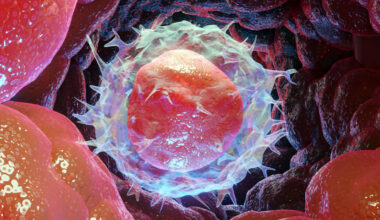At birth, a female is endowed with approximately one to two million primordial ovarian follicles, each containing an immature egg. This number represents a woman’s entire lifetime supply, as no new follicles are produced after birth. By the onset of puberty, the number of follicles declines to about 300,000 to 500,000 due to a natural process called atresia, where many follicles degenerate. Each menstrual cycle, under the influence of hormonal changes, several follicles are recruited, but typically only one reaches maturity and is ovulated, while the others undergo atresia. Over her reproductive lifetime, a woman will ovulate around 300 to 400 eggs. As women age, especially approaching their mid-30s, both the quantity and quality of their eggs decline. This reduction is due to the cumulative effects of atresia and age-related changes at the cellular level, including increased chromosomal abnormalities and mitochondrial dysfunction within the eggs. By menopause, typically occurring around age 50, the ovarian reserve is nearly depleted, with only a few hundred to a thousand non-viable follicles remaining. The decline in both egg quantity and quality significantly impacts fertility, increases the risk of miscarriage, and influences the potential success of reproductive technologies in later reproductive years.
To understand the menopausal-transition it is important to have an appreciation of the complexity of the menstrual cycle. The menstrual cycle is a hormonal symphony that begins at menarche and continues until menopause, coordinating female reproductive function. It typically lasts about 28 days and involves the interplay of several hormones across different phases: follicular, ovulation, and luteal. Initiated by the hypothalamus, gonadotropin-releasing hormone (GnRH) stimulates the anterior pituitary gland to release follicle-stimulating hormone (FSH) and luteinizing hormone (LH). During the follicular phase, FSH promotes the growth and maturation of ovarian follicles, each containing an egg. As these follicles develop, they secrete estrogen, which thickens the uterine lining and provides negative feedback to the pituitary to modulate FSH levels, preventing overstimulation. At mid cycle estrogen’s rise also triggers a surge in LH, leading to ovulation—the release of a mature egg.
Following ovulation, the luteal phase begins, characterized by the formation of the corpus luteum from the ruptured follicle. The corpus luteum produces progesterone, alongside some estrogen, to stabilize the endometrial lining and prevent further ovulation. Inhibin, secreted by the corpus luteum, specifically reduces FSH production to halt the development of new follicles. If the egg is not fertilized, the corpus luteum degenerates, leading to a drop in progesterone and estrogen, causing the endometrial lining to shed as menstruation, and a new cycle starts. As women approach menopause, ovarian reserves diminish, leading to erratic hormonal cycles with lower estrogen and progesterone production, ultimately ceasing ovulation and menstruation. This hormonal interplay not only regulates reproductive capability but also reflects transitional phases from menarche to menopause.Top of Form
The word ‘menopause’ comes from the Greek words ‘menos’ meaning month and ‘pausis’ meaning to cease. Menopause is the cessation of ovarian function, with loss of reproductive hormone production and irreversible loss of fertility. It is a natural part of reproductive aging. By convention, menopause has been defined as an entire year without a menstrual period due to depletion of oocytes The physiology of the menopause is complex and incompletely understood.
The process of oocyte depletion is exponential as noted previously begins in fetal life. Some confusion pertaining to menopause stems from the associated terminology. Although there are subtle changes in reproductive hormones and menstrual cyclicity that precede “the menopause transition,” for most women, the onset of the transition is marked by a missed menstrual period. Missing at least one menstrual period within the past 3 months or a variation in menstrual cycle length of 7 days or more defines the early menopause transition. This is thought to represent a “threshold” of oocytes below which normal ovarian function cannot be maintained. This threshold appears to reflect an overall loss of the follicle cohort. Although the term “menopause transition” is often used interchangeably with the perimenopause, the latter extends beyond the menopause transition and includes the first 12 months beyond the final menstrual bleed. Consequently, the perimenopause and the early post-menopause overlap, as a woman is considered to be postmenopausal from the time of her last menstrual period, which can only be retrospectively identified.
The earliest hormonal changes in the menopause transition are a decrease in the ovarian production of inhibin, which is responsible for restraining pituitary follicle stimulating hormone (FSH) secretion, specifically inhibin B in the follicular phase and inhibin A in the luteal phase. With the decline in inhibin, there is a rise in FSH throughout the cycle but most prominent in the early follicular phase. This FSH rise, in turn, leads to a shortening of the follicular phase and an accelerated process of follicle maturation. In some cases, FSH remains elevated in the luteal phase, leading to recruitment of a new follicle before the prior cycle has ended, the so called “luteal-out-of-phase” (LOOP) phenomenon. At this point in the menopause transition, women do not consistently experience decreased estradiol levels. However, some symptoms may emerge, including mild hot flashes and perimenstrual sleep disruption. The early transition is very variable in duration and can last for 5 years or longer.
As the follicle pool further dwindles, women experience longer duration of amenorrhea. Once a woman has gone 60 days or longer without a menstrual period, she has entered the late menopause transition, and the prevalence of more classic menopausal symptoms increases. These include worsening vasomotor symptoms (VMSs) (hot flushes and night sweats), vaginal dryness, worsening sleep, and adverse mood (low mood and anxiety). The late transition has a better- defined duration than the early transition lasting for a median of about 4 years. Hormone production by the ovary is erratic during this period of life, and it appears that both low estradiol levels, as well as variable estradiol levels, contribute to the symptom experience. Although menstrual cyclicity occurs intermittently, there is a relative decrease in luteal phase progesterone production.
Blood concentrations of anti-mullerian hormone (AMH), made by developing ovarian follicles, reflect the ovaries’ follicle reserve. Consequently, there has been interest in AMH as a potential predictor of when menopause might occur. AMH varies only minimally across the menstrual cycle and therefore can be assessed regardless of the timing within the menstrual cycle or presence of amenorrhea
The timing of the menopause is moderately consistent across geographical areas and ethnic groups, occurring around the age of 50. The basis of this common pattern is due to complex genetic traits that are largely unidentified. Familial predisposition to early or late menopause is commonly encountered, which supports the hypothesis of a genetic programming of ovarian failure. A relevant mechanism that determines age at menopause is the rate of oocyte loss throughout life. Beginning in utero from mid-gestation, the number of oocytes in the ovaries is subject to a continuous and progressive decrease due to apoptosis. This process starts during fetal life and continues throughout infancy, adolescence, and adult reproductive life, independent of reproductive events or hormones. This continuous loss is quantitatively far more important than follicle consumption due to ovulatory activity and is the primary determinant of ovarian exhaustion leading to loss of fertility and cessation of menses at midlife.
An additional mechanism explaining the progressive loss of ovarian function is the decreased sensitivity of ovarian follicular cells (granulosa and theca cells) to pituitary gonadotrophins (FSH and LH) that is observed in the later premenopausal years. The loss of coordinated production of estrogen and progesterone by follicular cells, along with the reduced response of theca cells to the mid-cycle LH surge, drive altered ovulation and menstrual irregularities. Other ovarian-derived hormones, such as inhibin B and AMH, decline with age because their synthesis depends on the number of follicles. This progressive global hormonal change alters the feedback between the ovaries and the hypothalamic nuclei producing gonadotrophin releasing hormone (GnRH), contributing to the cycle disturbances that characterize the perimenopause.
There is evidence that, before menopause, the hypothalamus undergoes independent functional modifications that impact the release of GnRH, hence affecting reproductive aging. Indeed, the synthesis and release of FSH and LH begin to change during the very early stages of the menopausal transition, at a time when the amounts of circulating estrogen and progesterone are not decreased. The pattern of LH release at mid-cycle shows the most prominent alteration, with less frequent but lengthier pulses, leading to disrupted ovulation, thereby decreasing fertility and causing menstrual irregularities. These observations suggest that some yet unidentified controller of reproductive aging might reside in the central nervous system and contribute to the events that precipitate ovarian failure at midlife.





